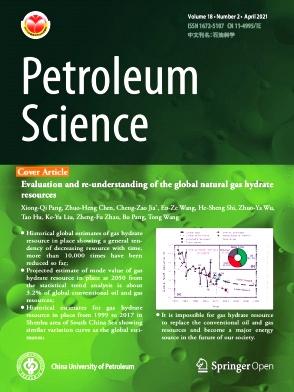Geochemistry and formation conditions of the Domanik sediments (Semiluksk horizon) in the Volga-Ural petroleum province, Russia
IF 6
1区 工程技术
Q2 ENERGY & FUELS
引用次数: 0
Abstract
The study reconstructs the Upper Devonian Domanik sedimentation conditions using geochemical studies. Domanik sediments, the subject of study, are being developed in Russia's Volga-Ural petroleum province. Core samples have been collected from the South Tatar arch and the Birskaya saddle, totaling four wells. Macroscopic description, optical microscopic petrographic examination, X-ray analysis, X-ray fluorescence analysis, inductively coupled plasma mass spectrometry (ICP-MS), simultaneous thermal analyses, scanning electronic microscopy (SEM), Rock-Eval pyrolytic studies, and correlation analysis were among the methods used in the study. Carbonate rocks, carbonate-siliceous rocks enriched with organic matter, and carbonate breccias are the main identified lithotypes. The predominant rock-forming mineral in carbonate-siliceous rocks enriched with organic matter is quartz (chalcedony) of authigenic genesis. The lack of correlation between organic matter concentration and quartz, as well as the results of simultaneous thermal studies and SEM, suggest that quartz is present in both biogenic and chemogenic forms. The proxies Cd/Mo and Co × Mn were used for proving variable hydrodynamic conditions in the Domanik sediments sea: sediments were deposited under both stationary and seasonal upwelling conditions. The major bioproductivity of the Domanik sea was also influenced by hydrothermal activity. The proxy (Fe + Mn)/Ti data and the results of the rock genesis evaluation using the Zn-Ni-Co triangle diagram confirm this. The presence of hydrothermal fluids not only improved primary production in the paleobasin, but it additionally provided silica, as evidenced by the strong relationship between silica and exhalation components in carbonate-siliceous rocks. Volcanic activity had a slight impact on Domanik sediment genesis. Anoxia and euxinia in the Domanik sea were indicated by proxy U/Th-TOC and V/Cr-TOC data, as well as behavior of U-EF and Mo-EF on the covariation plot, which influenced organic matter burial in the sediments. Simultaneously, the terrigenous intake was limited. Carbonate breccias, which are common in the Domanik sediments section, developed as a result of the gravitational transfer of carbonate fragments into the carbonate-siliceous material, which might be driven by earthquakes.
求助全文
约1分钟内获得全文
求助全文
来源期刊

Petroleum Science
地学-地球化学与地球物理
CiteScore
7.70
自引率
16.10%
发文量
311
审稿时长
63 days
期刊介绍:
Petroleum Science is the only English journal in China on petroleum science and technology that is intended for professionals engaged in petroleum science research and technical applications all over the world, as well as the managerial personnel of oil companies. It covers petroleum geology, petroleum geophysics, petroleum engineering, petrochemistry & chemical engineering, petroleum mechanics, and economic management. It aims to introduce the latest results in oil industry research in China, promote cooperation in petroleum science research between China and the rest of the world, and build a bridge for scientific communication between China and the world.
 求助内容:
求助内容: 应助结果提醒方式:
应助结果提醒方式:


